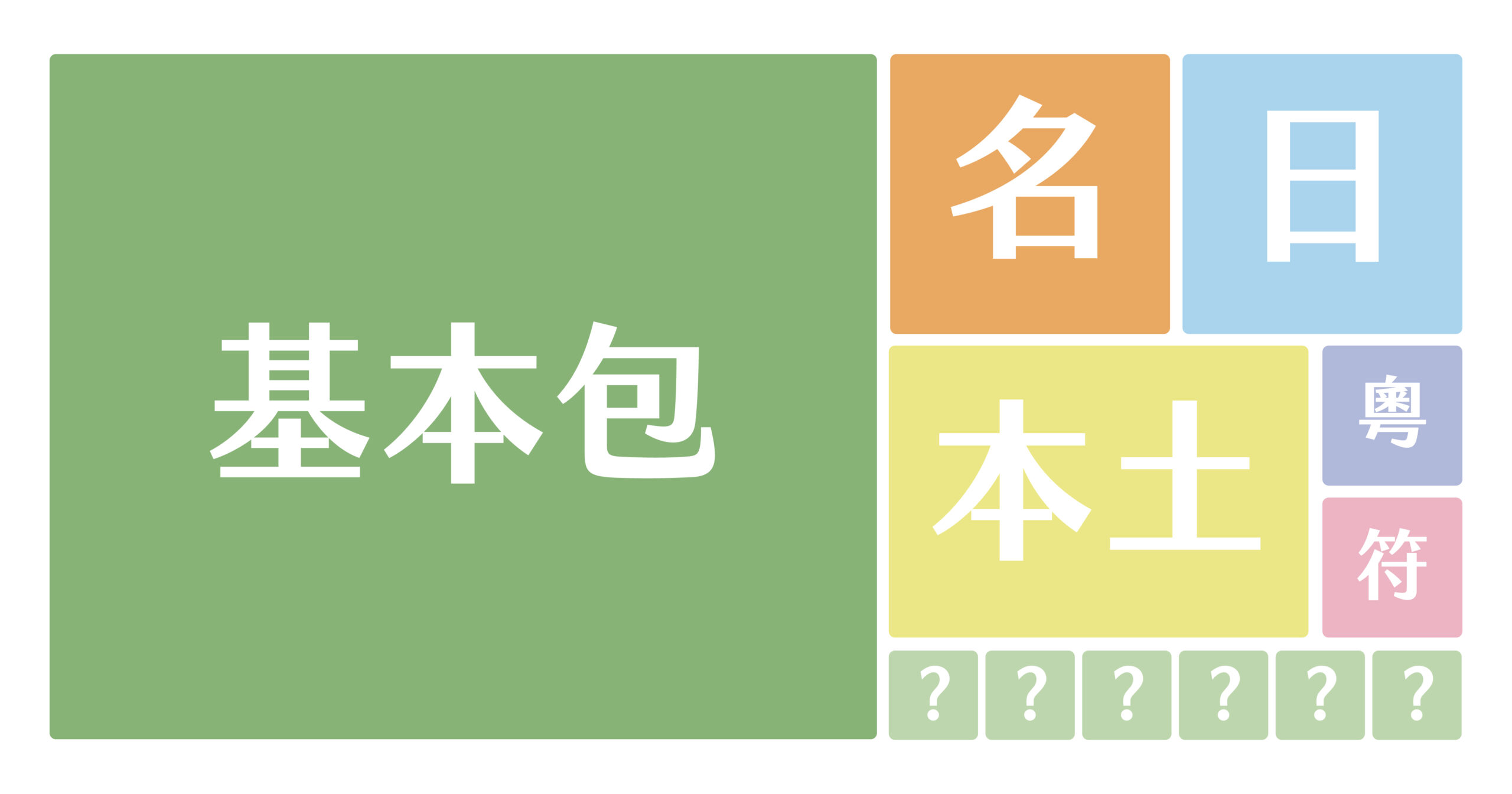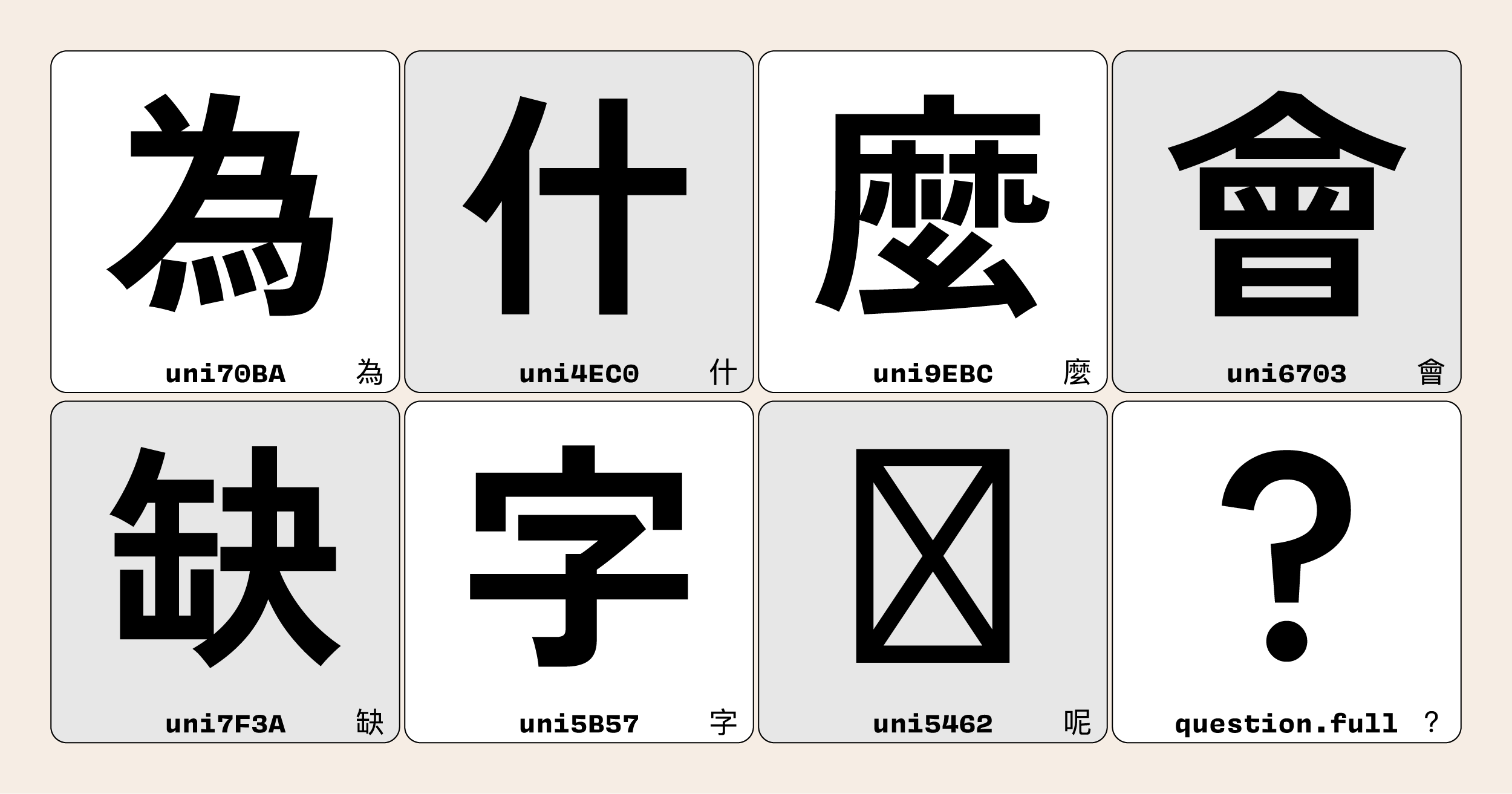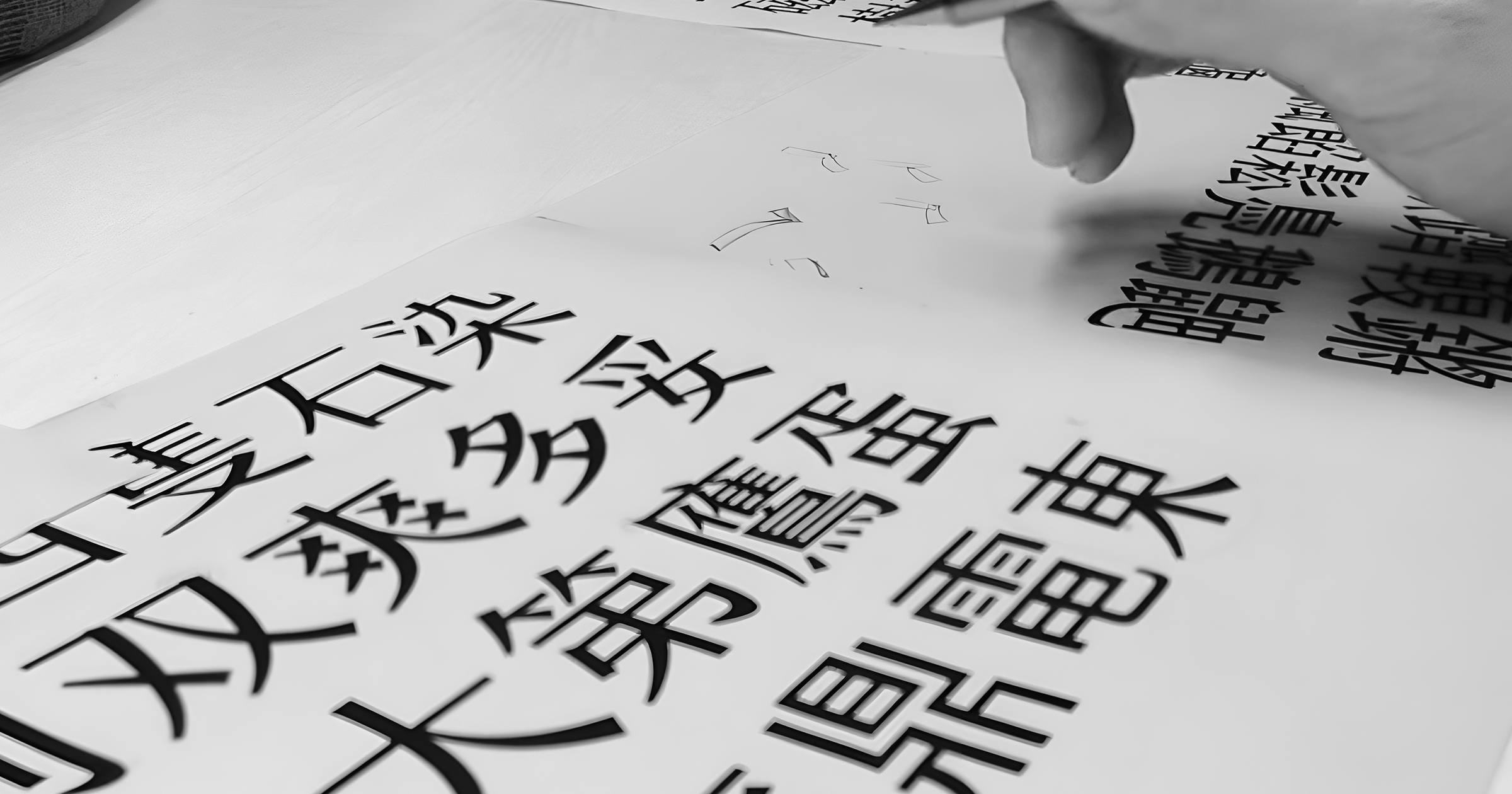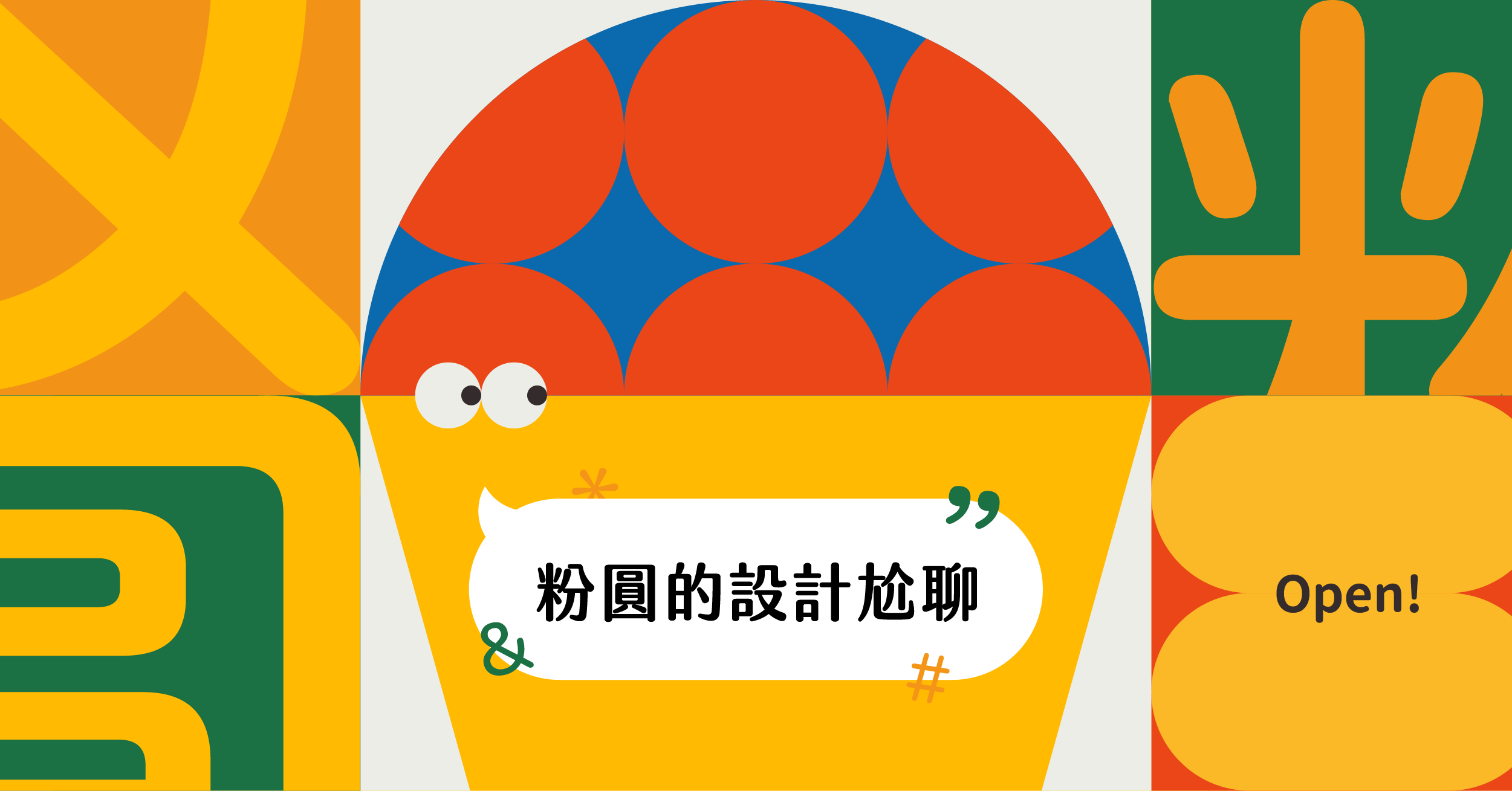“How many characters do I need to create for a usable font?”
This is the most common question independent designers face when creating Chinese fonts with justfont’s guidance. Designing a typeface suitable for Taiwan users is challenging, especially when it comes to the “character set.” Current standards either include too many characters, making completion nearly impossible, or are outdated and impractical. Moreover, Traditional Chinese character set standards are diverse and complex, making it difficult to understand the complete picture.
To solve this problem, justfont has consolidated industry standards from the past and invited experts to create the “jf7000.” This new standard aims to balance “character count” with “practicality” by focusing on approximately 7,000 commonly used characters as its core, complemented by Extension Packs for different purposes. This approach allows creators to combine extensions based on their design goals and available time, achieving the right balance between development time and language support.
What is a Character Set in Chinese Typography?
While character sets are familiar to most designers, the unique challenges of Chinese character sets deserve special attention. Unlike alphabetic writing systems with limited character counts, Chinese presents extraordinary complexity in terms of scale and selection criteria.
The Chinese writing system has evolved over thousands of years, generating tens of thousands of characters—far more than any designer could reasonably include in a single typeface project. While comprehensive Unicode encodings contain over 80,000 Chinese characters, only a fraction are actively used in contemporary communication.
For designers approaching Chinese typography, understanding the strategic selection of characters is crucial. Unlike Latin fonts where creating the entire character set is manageable, Chinese font designers must make calculated decisions about which characters to include. These decisions directly impact:
- Project feasibility: The difference between a 7,000 and 13,000 character set can mean years of additional design work
- User experience: Including the wrong selection of characters can lead to frequent “missing character” experiences for users
- Regional relevance: Character usage varies significantly between Taiwan, Hong Kong, China, and overseas Chinese communities
- Domain applicability: Different professional fields require specialized character subsets
The traditional Big5 encoding (with 13,060 characters) has been the default reference for decades, but creates significant challenges for independent designers due to both its size and increasingly outdated character selection. It simultaneously includes many obsolete characters while missing contemporary essentials—a reflection of its 1980s origins.
What’s Wrong with Big5?
Created in the 1980s, Big5 includes 13,060 Chinese characters. While this seems like a lot, it primarily referenced the Ministry of Education’s “Standard Character Table” and didn’t include certain variant characters or consider names of people and places, technology, or everyday terminology.
Additionally, due to its age, characters commonly used in Formosan languages (Taiwanese Hokkien [Taigi], Taiwanese Hakka, Indigenous languages), Cantonese, and Japanese that weren’t emphasized or commonly used at the time were not included. Consequently, Big5 is missing many characters that modern users consider “very common.”
To address these missing characters, many foundries add more characters to expand font support. For instance, justfont’s products support Big5 Supplementary Edition, with Chinese character counts exceeding 14,000. The Hong Kong government created the “Hong Kong Supplementary Character Set” (HKSCS) with over 5,000 characters based on Big5, which some foundries use as a reference.
However, the more characters included, the more challenging it becomes for independent designers. Even a whole team needs several years to design a font supporting basic Big5, let alone independent designers.
Moreover, Big5 not only lacks many common characters but also includes many rarely used ones. Asking designers to spend time on characters that are rarely needed is also problematic. Therefore, we began to consider: Could we “slim down” the character set by excluding less frequently used modern characters and create a new character set with an appropriate number of characters and coverage?
The jf7000 is Now in Public Testing!
We have consolidated different existing character sets, our own standards, and feedback from font users over the years to curate our recommended standard—the “jf7000″—which is now freely available for public use!
This is a character set that is “not too large” yet “sufficiently versatile,” aiming to balance time investment with practical usability. It includes characters from the Ministry of Education’s Common Character Table and those common across various foundries’ sets, while also adding Taiwan place names, person names, business-related characters, and commonly encountered missing characters.
This project is led by the justfont team, with editorial committee members including Zhi-Jie Ko (But Ko), author of “字型散步 (A Chinese Font Walk)” and modifier of the Noto Series, and Kiàn-Tiong Tân, Taigi consultant for multiple justfont fonts.
Based on the “Core Set” of fewer than 7,000 characters, designers can support most Taiwan usage scenarios by completing just the basic package. Additional Extension Packs include “Taiwan Naming Pack,” “Formosan Languages Pack,” “HK & MO Common Pack,” “Japanese Common Pack,” and “Symbol Pack,” allowing designers to freely choose combinations based on their language support and functional goals. There is some overlap between Extension Packs, so users can test on the jf7000 official page to find the most suitable combination.
The jf7000 is currently in public testing. You are welcome to visit the information page to try it out or download the character set to help us test whether it meets requirements and if there are any character gaps. If you have professional needs (such as ecological guides, ancient text research, physical and chemical textbooks, etc.), we welcome your assistance in creating specialized supplementary character sets.
jf7000 Inclusion Standards
Core Set
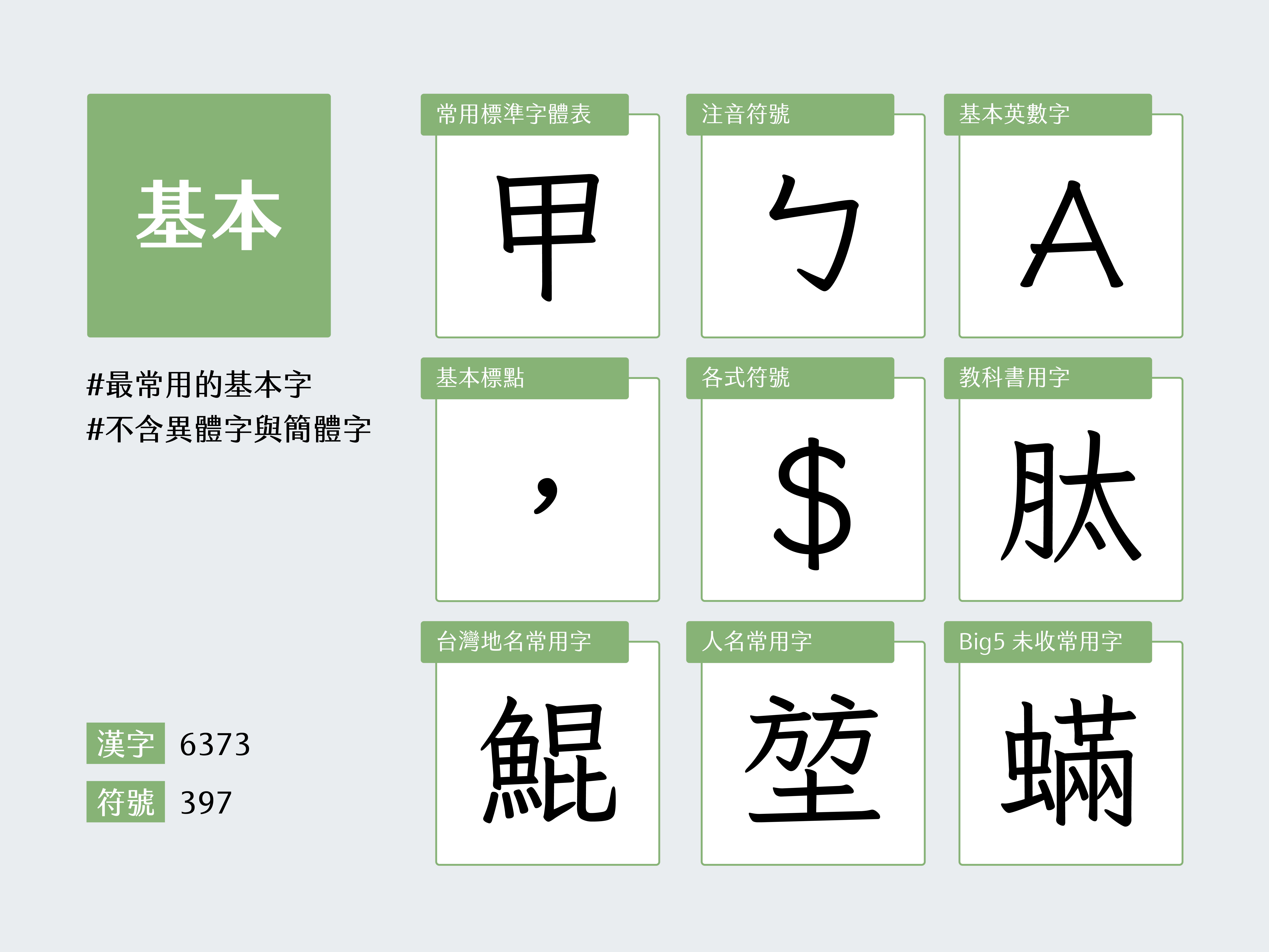
The Core Set includes the Ministry of Education’s commonly used standard characters, Taiwan county and township names, the most common name characters (referencing College Entrance Examination Center lists), and scientific or classical Chinese characters commonly found in textbooks up to high school level. It also references characters included in most Traditional Chinese fonts, selecting commonly used characters for contemporary Taiwanese life scenarios, including those commonly used but not included in Big5.
The Core Set also includes basic alphanumeric characters, Zhuyin phonetic symbols, and basic full-width and half-width symbols. To avoid confusion with similar symbols, the jf7000 also provides symbol usage descriptions and application examples, detailed in the web spreadsheet.
Taiwan Naming Pack
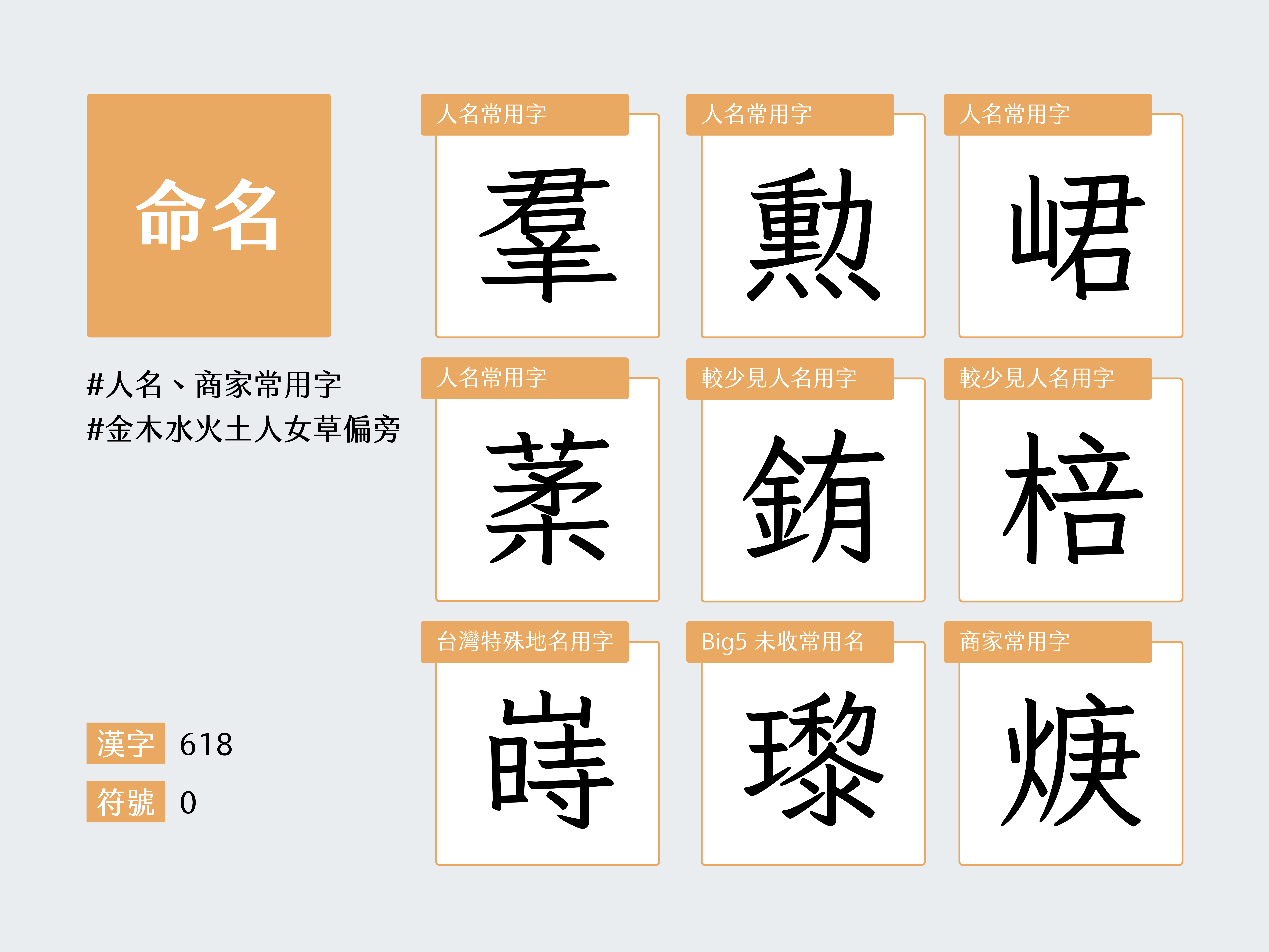
The freedom to create Chinese characters is reflected in the diverse writing conventions for personal names. However, the Big5 standard primarily follows the Ministry of Education’s standard characters, causing many people to struggle with missing characters in their names and forcing foundries to expand their collections to include common name characters.
The jf7000 Taiwan Naming Pack references the College Entrance Examination Center lists, Ministry of the Interior land administration characters, and more, including common name characters not in the Core Set, some place name characters, and characters commonly used by Taiwanese businesses.
Formosan Languages Pack
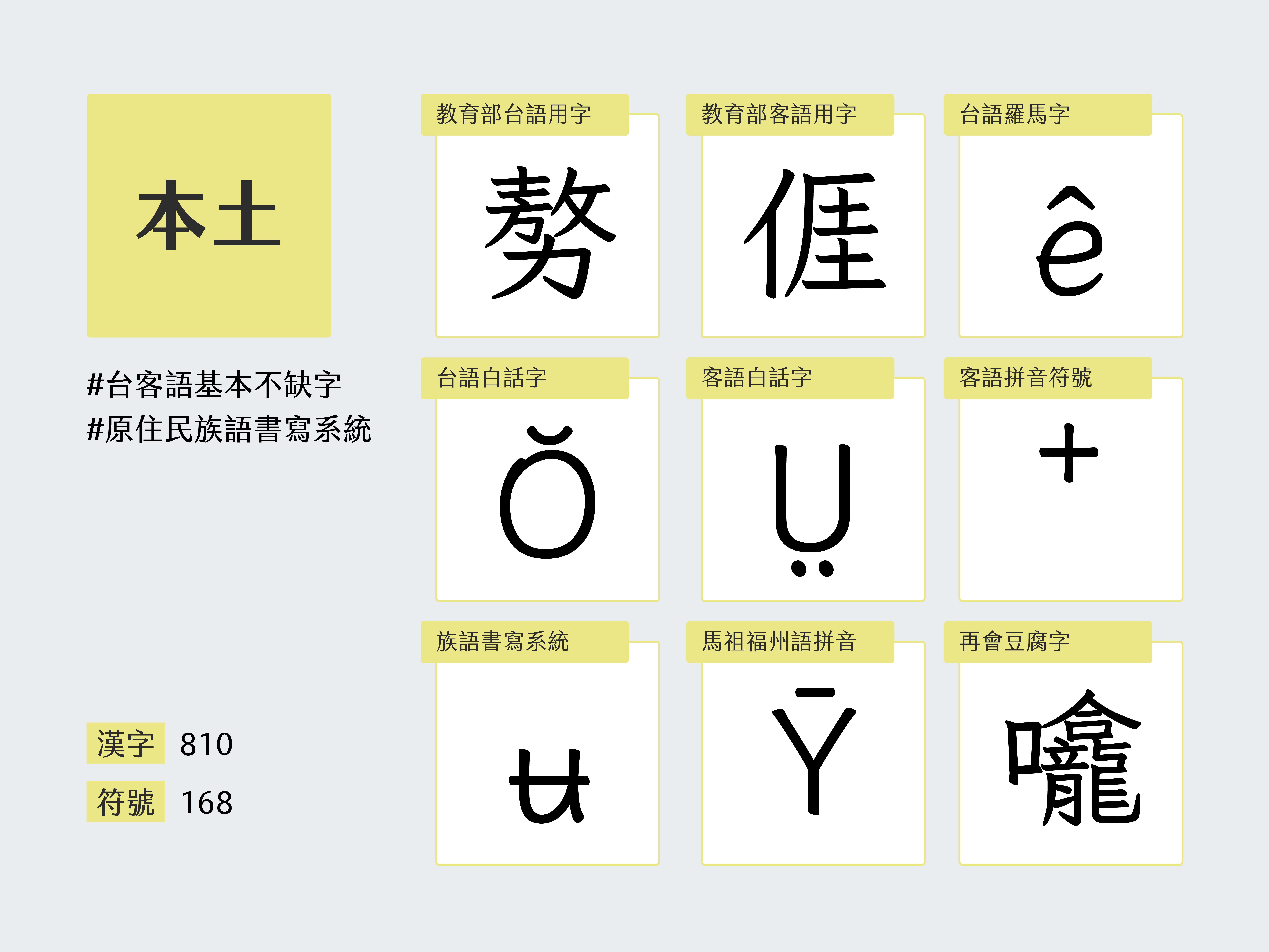
justfont’s fonts have always supported Taiwan’s Formosan languages, and the jf7000 continues this tradition with a customized Formosan Languages Pack.
This package references the Ministry of Education’s Taiwanese Hokkien Common Dictionary, Ministry of Education’s Taiwan Hakka Common Dictionary, “Goodbye Tofu Character” Chinese characters, and more. It includes common Chinese characters used in Taiwanese Hokkien and Hakka, Romanized scripts for these languages, indigenous writing systems, and Matsu Fuzhou dialect phonetics. It also considers the needs of those learning Chinese in Taiwan by including Hanyu Pinyin (Zhuyin is included in the Core Set).
HK & MO Common Pack
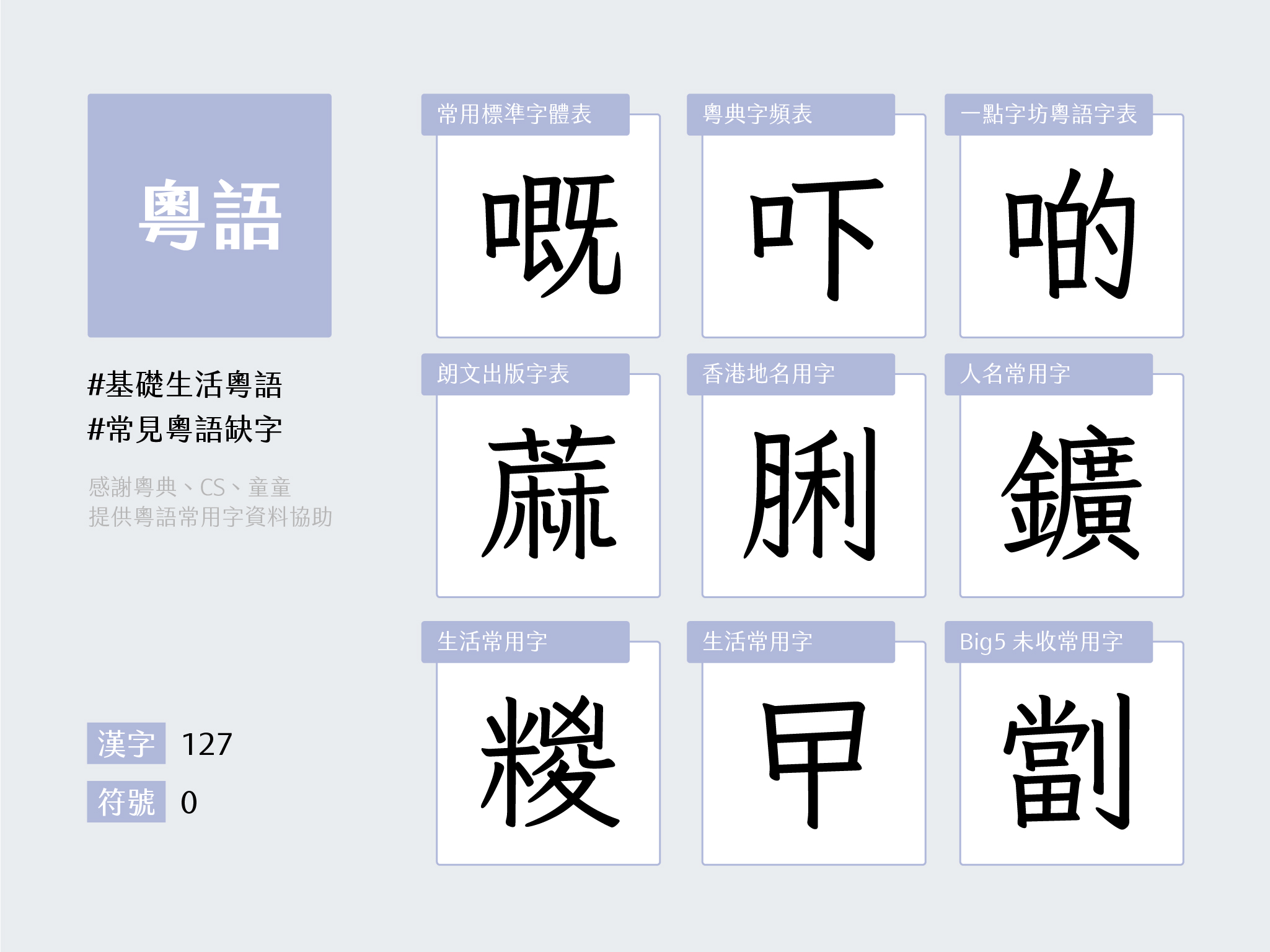
One major problem with Big5 as the primary reference for Traditional Chinese fonts is its lack of Cantonese characters and Hong Kong variant characters, which led the Hong Kong government to create a supplementary character set and many foundries to add characters themselves.
To reduce the burden on designers, the jf7000 includes an extension set for basic everyday Cantonese scenarios, referencing Cantonese Dictionary frequency data, PointType Cantonese character tables, Longman grade-level character tables, Hong Kong street names, and community suggestions.
Thanks to Cantonese Dictionary, users CS and Tongtong for providing Cantonese common character data.
Japanese Common Pack
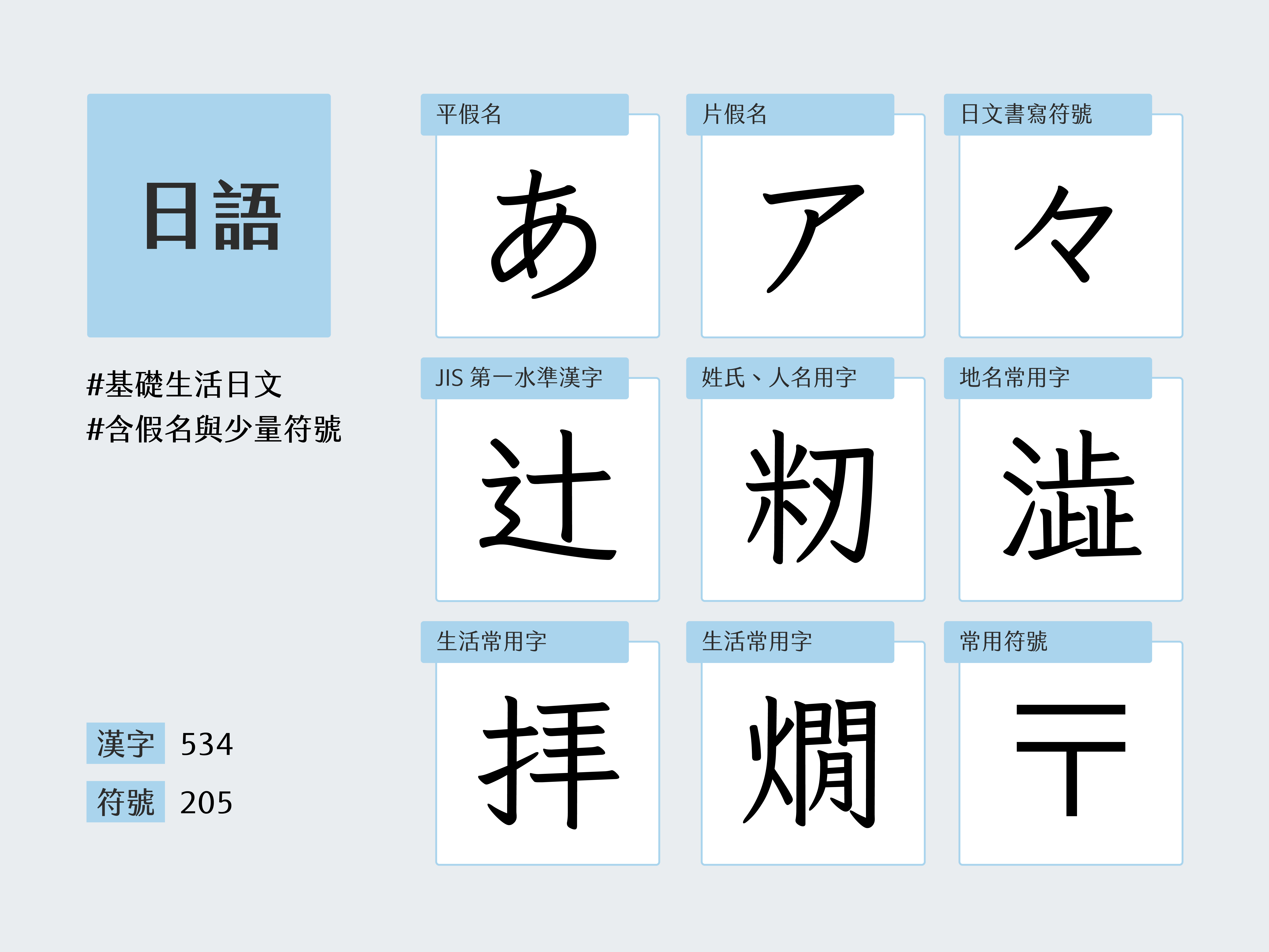
The Japanese Common Pack references Japan’s Common Kanji Table, Name Kanji Table, and certain Kanji included in Japanese fonts to establish a Japanese package suitable for daily life in Japan. This extension package supports JIS Level 1 industrial standards and includes kana and common Japanese symbols.
Symbol Pack

The Symbol Pack includes alphanumeric characters with circles and parentheses (circled numbers are in the Core Set), Greek letters, Taiwanese phonetic symbols and extended punctuation, Suzhou numerals, and other non-Chinese character symbols.
Do You Have Professional Needs? We Need Your Feedback
The jf7000 aims to reduce designers’ burden while meeting daily life needs. However, during its development, we discovered many characters that, while not common in everyday life, are essential in specific fields.
Therefore, we hope to not only use the conventional “language” and “frequency of use” criteria but also consider “functionality” by developing specialized Extension Packs for specific needs. For example, fonts that support bird guide compilation need to include many Chinese characters with the “bird radical,” while fonts supporting textbook layout need characters and special symbols used in “Forty Classical Texts” and “Physics and Mathematics Textbooks.”
We look forward to using this project as a catalyst to invite experts from various fields to provide insights on specialized character usage, helping us compile professional domain character sets and providing guidance for aspiring font designers, opening up more possibilities for future font proposals in Taiwan.
As of March 2025, suggestions from community experts are summarized in the table below, including “Fanbase Support Packages,” “Chemistry Packages,” and “Ecology Packages.” Please visit the professional extension package page for more details.
Release and Download
The jf7000 is now running the first round of public testing. Future justfont font products will support the Core Set range, and past font products will gradually be updated to include the Core Set range.
The currently released files are Glyphs character set lists, usable only in Glyphs. Because some characters in the set don’t have dedicated Unicode encoding, list format is used to avoid character omission.
If you don’t use Glyphs software, you can access the web spreadsheet version or download the plain text file version to browse the character set packages and quickly search for specific characters. However, note that due to encoding issues, directly copying the web or text version character tables will result in some character omissions, so they are recommended for reference only.
This character set is open-sourced under CC BY-SA 4.0 and is freely available for all units to use.
This article is an updated version of 隆重宣佈|jf 7000 當務字集公開測試中!, translated with the help of Claude.
